We have to destroy the eagle in order to save it…
July 9th, 2014
American Wind Energy Ass.’ John Anderson is spouting off in the DelmarvaNow Opinion section, and good thing it’s in the Opinion section because it’s a little skewed on facts and displays a disturbing outlook.
Anderson’s bio says:
I am the industry lead on national wildlife and non-wildlife siting issues for both land-based and offshore wind development. In this role, I get to work on critical issues related to the deployment and operations of U.S. wind energy facilities, which – once addressed – will aid in the advancement of a form of energy generation that is key to combating climate change.
Two things jump out at me:
- John Anderson is the industry lead, but I’m not seeing anything about development of wind siting that’s respectful of humans or wildlife, and in his opinion piece, it discounts documented issues of eagle kills and projected eagle kills and it minimizes the potential for eagle and other bird kills via wind turbines.
- John Anderson advances the fiction that “deployment and operations of U.S. wind energy facilities, which – once addressed – will aid in the advancement of a form of energy generation that is key to combating climate change.” Oh, pleeeeeeeaze… Building wind turbines does not reduce carbon emissions — shutting down coal plants does. Not one Renewable Energy Standard/Mandate links building and using renewable energy generation with shut down of any generation that produces CO2. PERIOD. There is no link. This is a problem that needs to be corrected, but as it stands, building all the wind in the world, adding to the existing surplus of generation, will not decrease carbon emissions. The economic depression actually did something for reducing CO2 emissions, but we’ve got a surplus. AWEA is a big fan of transmission, which rather than force shutdown of the CO2 emitters, adds to transmission capacity for regional marketing, and allows those coal plants to continue operating. If they were shut down, there’d be plenty of capacity for all the wind they could want on those wires, actually taking the place of the coal now on the wires. The massive transmission build-out is all about keeping “Coal on the Wires.” ICF – Midwest ISO Benefits Analysis explains it quite well, and succinctly, when it states that the benefits of the transmission build-out is best achieved where coal displaces natural gas. Great… just great policy…
I’m concerned about this both as an attorney who has worked for clients intervening in wind project dockets with significant eagle kill issues, modeling showing deaths of both Bald Eagles and Golden Eagles would occur (see record for the Goodhue Wind project here in Goodhue County, PUC Dockets 08-1233; 09-1176; 09-1349 and 09-1350), and as a former board member of the National Eagle Center, referenced with a quote from its site (though he’s misnaming it as “National Bald Eagle Center.” The name is a BIG deal to the National Eagle Center.) I’m also concerned about this because its appearing in Delmarvanow, as I have ties to Delaware and my partner Alan Muller is Executive Director of Green Delaware, instrumental in the Delaware Public Service Commission’s RFP selection of a wind/gas combo in a level playing field comparison between wind, natural gas, and IGCC (coal gasification).
It seems the lessons of the Goodhue Wind Project and its Avian and Bat Protection Plan, typical of wind projects and eagle take permits in Minnesota, need review:
U.S. Fish and Wildlife predicted the following eagle mortality would accompany the small 78MW Goodhue Wind Project a/k/a New Era Wind Farm, and yes, folks, it would require an eagle take permit:
USFWS Comment on Goodhue Avian & Bat Protection Plan January 16, 2013
Let’s be clear — an eagle take permit is a federal permit allowing the permit holder to kill eagles.
The National Eagle Center’s website states under “Do wind turbines need an eagle take permit” an incorrect answer:
This needs correction. Many wind projects do require take permits. Eagle take permits are on a project by project basis and they absolutely can and are required for wind projects, the project here in Goodhue a local example. FYI, it’s not just wind projects, it’s transmission that kill eagles too, and the AWEA folks are fond of promoting transmission “for wind” (NOT). The CapX 2020 transmission project required eagle take permits for its Belle Plaine Minnesota River crossing and for the Mississippi River crossing near Alma, Wisconsin.
Today at Delmarvanow.com:
Like people, eagles benefit from clean environment
EQB Presentations re: EPA Regulations
June 20th, 2014
Hot off the press… errrr, close, they came in yesterday, THANK YOU to MPCA staff for forwarding. Check out Mark Seeley’s, it’s the best, he knows what he’s talking about and does a good job of it.
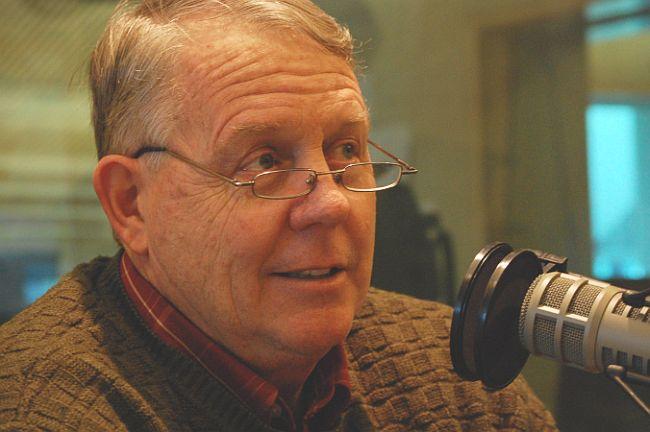 Mark Seeley, University of Minnesota Dept. of Soil, Water and Climate (MPR Photo)
Mark Seeley, University of Minnesota Dept. of Soil, Water and Climate (MPR Photo)
MN_EQB_2014_Seeley – THIS IS A MUST READ
EQB event_Crabtree_6-18-2014 (see p. 11: “Improvements in transmission and distribution to reduce line loss.” Give me a break… and he didn’t mention their funding for transmission for coal promotion, nor their earlier coal gasification promotion — can’t imagine why!)
Presentation1 June 2014 Commerce (Bill Grant? How credible is the guy who want’s to “find a way forward for coal?” Note p. 3, focus on 5 sectors, and coal is NOT mentioned. Surprise, surprise…)
CSEO_EQB subcommiteee meeting – This is important for the timeline and “plan”
EQB hosts EPA rule listening session
June 17th, 2014
Where to start… in addition to just one day’s notice, look at the presenters, skewed towards “Coal on the Wires” where they can explain how it’s all about wind, an important concept as we consider what these EPA regulations mean. From this vantage point, it’s my understanding that with the new regulations, it might have an impact of maybe 7% decrease in use of coal for electrical generation. Bears more review.
Here are the EPA regs they’ll be talking about, and it’s open for Comment until some time n September:
Proposed power plant regulations
Clean Power Plan Proposed Rule – June 2, 2014
Proposed Carbon Pollution Standards for Modified and Reconstructed Power Plants – June 2, 2014
TOMORROW, at the EQB (click for larger version):
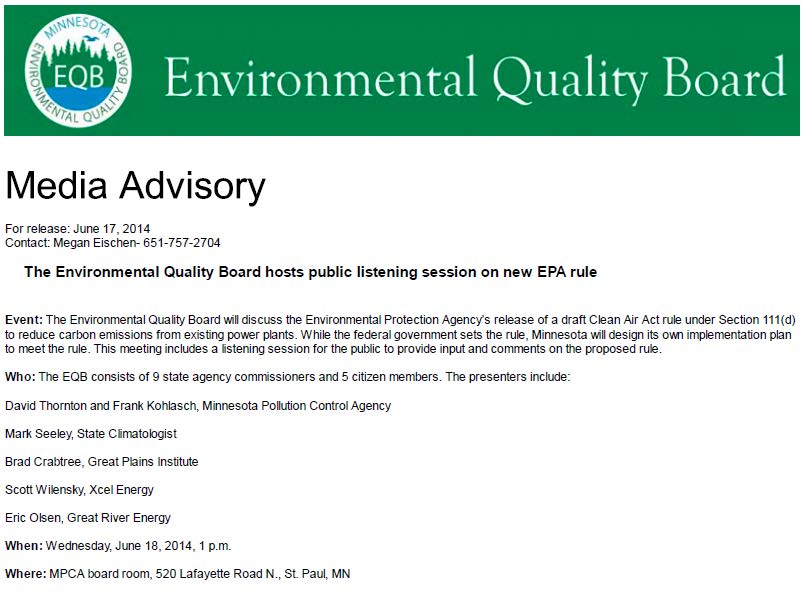 From the looks of it, it sure looks like more of a “talking session” to me. And note those last three!
From the looks of it, it sure looks like more of a “talking session” to me. And note those last three!
Brad Crabtree, Great Plains Institute
Scott Wilensky, Xcel Energy
Eric Olsen, Great River Energy
All promoters of transmission, “Coal on the Wires,” otherwise known as CapX 2020 plus. Here’s CapX 2020, look at those North Dakota references:
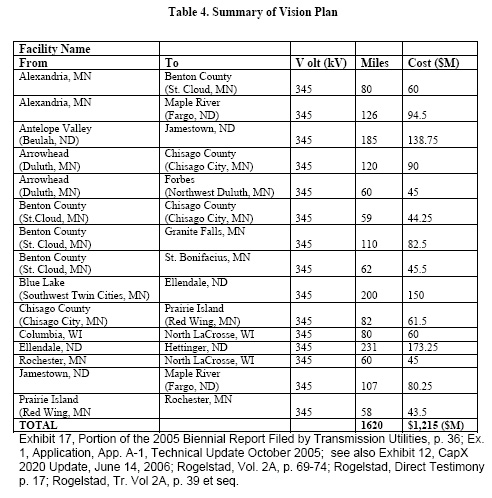 And the map, again, look where it starts:
And the map, again, look where it starts:
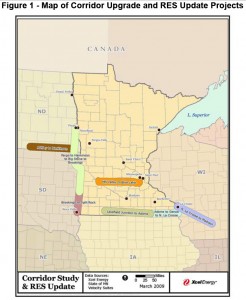 And the MISO Multi-Value Project list of 17 transmission projects:
And the MISO Multi-Value Project list of 17 transmission projects:
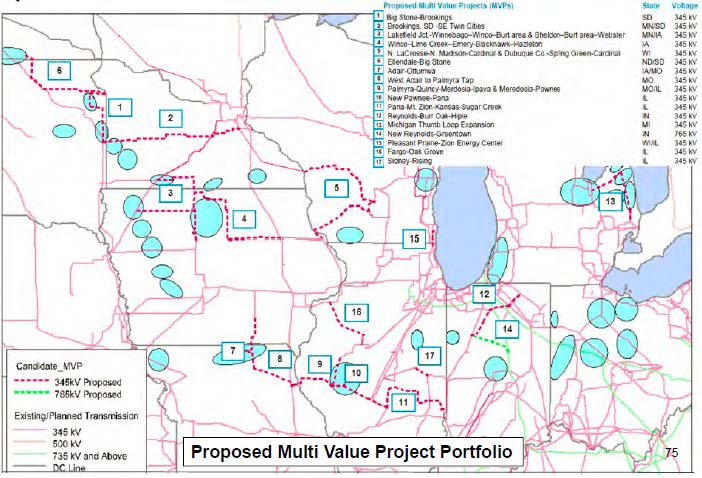 And folks, with all that transmission, here in the Midwest, we’re most of the way to JSCP:
And folks, with all that transmission, here in the Midwest, we’re most of the way to JSCP:
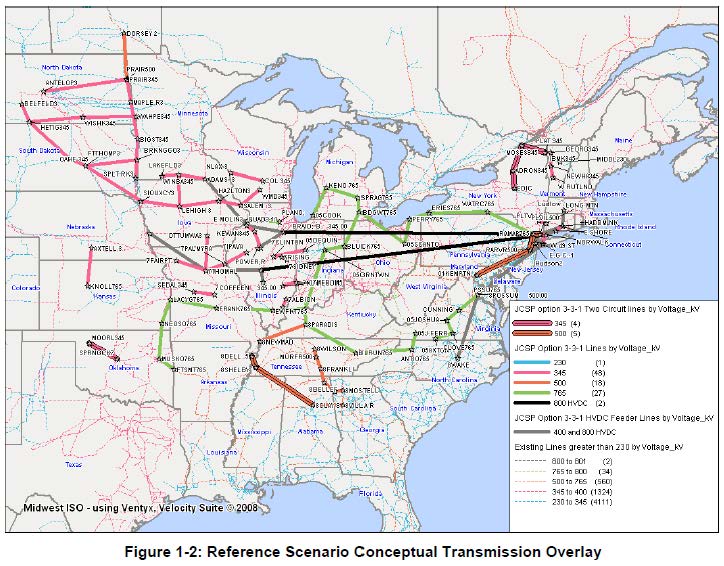 As Xcel’s Tim Carlsgaard argued the other day, there are no plans for new coal… Well, when CapX 2020 was at the PUC for the Certificate of Need, MISO’s Jeff Webb testified that there was 3,441 of new coal in ND, SD, IA and MN in the MISO queue (and over 7,000 MW of wind in the Illinois queue). And we know that transmission for coal pays, and oh, how it pays:
As Xcel’s Tim Carlsgaard argued the other day, there are no plans for new coal… Well, when CapX 2020 was at the PUC for the Certificate of Need, MISO’s Jeff Webb testified that there was 3,441 of new coal in ND, SD, IA and MN in the MISO queue (and over 7,000 MW of wind in the Illinois queue). And we know that transmission for coal pays, and oh, how it pays:
But that’s different now… OH? How so? Because it’s not different. It’s “Coal on the Wires.”
First, there’s no talk of closing the coal plants in the area where CapX 2020 transmission starts. Minnesota Power did buy a transmission line and will convert it to wind, but what will happen to the coal on that line:
Oh, right, CapX 2020 will be up and running by then. And after all, additional transmission for coal has been in the works for a long, long time, well over the 15 years that I know of:
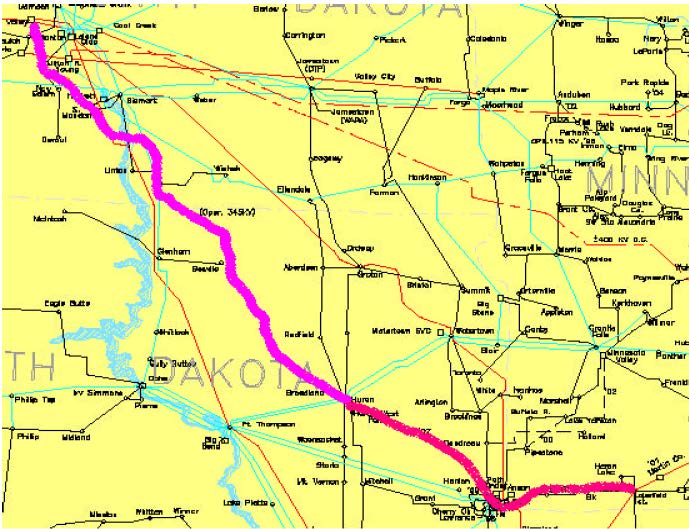
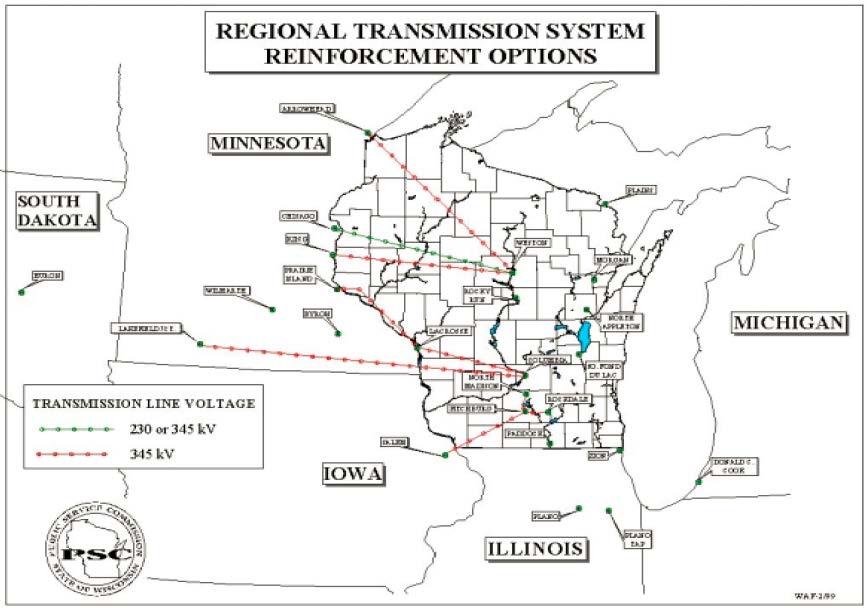 You can see how the “new” CapX 2020, JCSP, and MISO MVP plans have built on the foundation of Lignite Vision 21 and WRAO/WIREs. Yea, but that’s still old news. Sure, but there’s a lot to be said about learning from history. And then there’s this matter of trajectory, we can see where this is going.
You can see how the “new” CapX 2020, JCSP, and MISO MVP plans have built on the foundation of Lignite Vision 21 and WRAO/WIREs. Yea, but that’s still old news. Sure, but there’s a lot to be said about learning from history. And then there’s this matter of trajectory, we can see where this is going.
As I noted on No CapX2020 not long ago, here’s what’s up with coal right now:
- Not one North Dakota coal plant has been shut down.
- Minnesota Power has purchased the “coal line” coming from North Dakota into Northern Minnesota, and once CapX 2020 is up and running at the western end, they’ll put that coal generation on CapX.
- Read the federal judge’s decision on the Next Generation Energy Act, declaring it unconstitutional. First, the decision notes that the Dry Fork coal plant has been moved from the West into the Eastern Interconnect (it’s “new coal” now on transmission heading our way that wasn’t coming here before).
- Also in that decision, it discusses plans for a new coal fired plant in South Dakota.
- And also the potential for an additional unit at Dry Fork, which is now in Eastern Interconnect (coming our way).
- AND it discusses the surplus at Milton Young, which would be exacerbated by transmission prohibitions of the Next Generation Energy Act.
What else is planned? Let’s all start looking, particularly since the federal judge’s decision on the Next Generation Energy Act.
Don’t forget that there is not one single Renewable Energy Standard/Mandate that requires any coal be shut down. It only requires addition of “renewable” generation. Think about that. If we shut down the coal, for instance the North Dakota coal where CapX starts, there would be plenty of transmission capacity for wind and the back up gas or hydro to firm it up. DOH! So if the enviros and those supporting RES across the country are serious about stopping coal, why aren’t they including requirements to shut down coal, and why are they promoting transmission? It doesn’t reduce emissions, doesn’t reduce CO2 or anything else, it just adds wind generation on top of an admitted surplus. Why support and promote transmission, and not require shut down of coal? Well, they are getting paid to support and promote transmission.
And speaking of Great Plains Institute…. GPI has long been trying, as Bill Grant did, to “find a way forward for coal” (Walton’s Bill Grant and “low carbon coal”). Remember Great Plains and all they did for money on coal gasification? Here’s just a bit of it:
Great Plains Institute for Sustainable Development
To support the efforts of its Coal Gasification Working Group.
Minneapolis, MN $437,500
21 mos. 2006Great Plains Institute for Sustainable Development Inc.
To brief Midwest lawmakers and regulators about how advanced coal technologies are currently deployed in Europe and encourage their support for similar adoption here.
Minneapolis, MN $99,400
1 yr. 2007
Here’s more:
IGCC toadies in Pierre, SD
And speaking of the EPA, here’s a settlement where they caved in exclusion of coal gasification as BACT (DOH, how could it be when it’s not happening? The EPA was right, and the IGCC toadies pushed for inclusion of coal gasification and got this settlement, and how much money was attached to that? Furthering the IGCC: Pipedreams of Clean and Green is not in anyone’s interest.):
We must remember history and hopefully not repeat it. There’s the established history of transmission planning for coal, and there’s the established history of “environmental” NGOs supporting coal gasification and transmission for money. As they discuss these new EPA regulations and the potential impact, remember that they put their mouth where their money is.
Meanwhile, about those Comments to the EPA? Again, here’s what’s at issue:
Proposed power plant regulations
Clean Power Plan Proposed Rule – June 2, 2014
Proposed Carbon Pollution Standards for Modified and Reconstructed Power Plants – June 2, 2014
And read Charlie Komanoff’s views:
How to file Comments? From the fed website, the pre-publication version I have doesn’t state the deadline, but it’s September sometime:
Submit your comments, identified by DocketID No. EPA-HQ-OAR-2013-0602, by one of the following methods:
- Federal eRulemaking portal: http://www.regulations.gov
- Email: A-and-R-Docket@epa.gov. Include docket ID No. EPA-HQ-OAR-2013-0602 in the subject line of the message.
- Facsimile: (202) 566-9744. Include docket ID No. EPA-HQ-OAR-2013-0602 on the cover page.
- Mail: Environmental Protection Agency, EPA Docket Center (EPA/DC), Mail code 28221T, Attn: Docket ID No. EPA-HQ-OAR-2013-0602, 1200 Pennsylvania Ave., NW, Washington, DC 20460. In addition, please mail a copy of your comments on the information collection provisions to the Office of Information and Regulatory Affairs, OMB, Attn: Desk Officer for the EPA, 725 17th St. NW, Washington, DC 20503.
Hollydale Order – Withdrawn with conditions
May 12th, 2014
The PUC’s Order granting withdrawal of Xcel’s Hollydale Transmission Project application, WITH CONDITIONS, just came in:
Here’s the interesting part:
The Commission requires parties seeking to withdraw filings without prejudice to demonstrate that withdrawal would not contravene the public interest, would not prejudice any party, and would not raise issues requiring Commission action.5
5 See, e.g., In the Matter of CenterPoint Energy’s Petition for Approval of a Miscellaneous Tariff Change, Docket No. G-008/M-13-333, Order Permitting Withdrawal of Filing (Nov. 13, 2013) (articulating standard).
Oh really? That’s good to know, but it’s a little different than briefing papers and initial resistance to conditions would indicate. Here’s that Order, and you can see how the “standard” was articulated:
The articulation of the standard?
The Commission finds that the proposed withdrawal does not contravene the public interest, does not prejudice any party, and does not raise issues requiring Commission action. The Commission will therefore permit withdrawal.
That’s it — no discussion in the order, just this statement!
DEIS Meetings for ITC Midwest’s MN/IA line
April 21st, 2014
This week we have three days of DEIS meetings, that’s Draft Environmental Impact Statement for the uninitiated. The schedule:
Fairmont Tuesday, April 22, 2014 1:00 p.m. and 6:00 p.m. Knights of Columbus Hall 920 East 10th Street Fairmont, MN 56031 Jackson Wednesday, April 23, 2014 1:00 p.m. and 6:00 p.m. National Guard Armory 108 County Road 51 Jackson, MN 56143 Blue Earth Thursday, April 24, 2014 1:00 p.m. and 6:00 p.m. Hamilton Hall 209 South Main Street Blue Earth, MN 56013
This project is important because, well, look at the red line in the map above that represents this project. It connects on the west to the Split Rock-Lakefield Jct. line from a decade ago, and then goes east, and drops down into Iowa, to become part of a web headed toward Chicago. The red and green on that map constitute MISO designated MVP3, and to the east, the orange and blue are MVP 4, and further to the east, 1/2 of which is Badger Coulee, is MVP 5. Important to note that there are 17 MVP projects, and all 17 must be built to offer the benefits touted, the modeling included all 17. Not only that, but cost apportionment also included costs to states beyond just the percentage of the one project under review, i.e., there are claims of benefits of MVP 3, but those benefits require MVP 4 and MVP 5, and in fact, ALL the 17 MVP projects. Costs to Minnesota ratepayers are “just” a portion of MVP 3, but there are also costs to Minnesota of MVP 4, MVP 5, and I think ALL of the 17 MVP projects. So the benefits that are reliant on all the 17 projects being built must be balanced against the costs attributable to Minnesota for all 17 projects! See, that wasn’t so hard, was it!
Here’s the DEIS from the Commerce ITC MN/IA DEIS page, it’s easier to cut and paste, though it’s a good idea to download because you never know when links will be changed or disappear:
Draft Environmental Impact Statement Text
- Abstract
- Table of Contents
- Summary
- Section 1 – Introduction
- Section 2 – Regulatory Framework
- Section 3 – Overview of Project and Alternative Routes and Sites
- Section 4 – Alternatives to the Proposed Project
- Section 5 – Affected Environment, Potential Impacts and Mitigation Measures
- Section 6 – Impacts and Mitigation Measures for Specific Regions / Segments
- Part 1 – Lakefield to Huntley Segment
- Part 2 – Resource Maps (9.2 MB)
- Part 3 – Resource Maps (7.3 MB)
- Part 4 – Resource Maps (8.3 MB)
- Part 5 – Huntley to Iowa Border Segment
- Part 6 – Resource Maps (6.2 MB)
- Part 1 – Lakefield to Huntley Segment
- Section 7 – Relative Merits of Routing Options
- Section 8 – References
Appendices
- Appendix A – Scoping Decision (5.7 MB)
- Appendix B – Generic Route Permit Template and Example Route Permit
- Appendix C – Transmission Line Structures
- Appendix D – Photo Simulations
- Appendix E – Example Agricultural Impact Mitigation Plan
- Appendix F – Noise Supplement
- Appendix G – Property Values Supplement
- Appendix H – EMF Supplement
- Appendix I – Archaeological and Historic Resources Data
- Appendix J – Route Analysis Data Tables
- Appendix K – Rare Resources and Rare Species
- Appendix L – Map Book
- Overview Map
- Part 1, Map Sheets LH1 to LH19 (7.3 MB)
- Part 2, Map Sheets LH20 to LH44 (8.6 MB)
- Part 3, Map Sheets LH45 to LH57; HI1 to HI12 (7.7 MB)



